COPACABANA
Days spent: 1
Days recommended: 1
Where we slept: Disney-esque ultra-comfy suit in the surprisingly inexpensive and eco-friendly Hostal Las Olas. This place alone is a good enough reason to visit Copacabana! Also because you would never expect anything like this from Bolivia… Literally a dream after weeks of unfurnished dorms and cold showers.
What we ate: meat bourguignonne while enjoying the sunset view on Copacabana bay from the smoochy and quite fancy (still very affordable) restaurant La Cupola. Veggies, eggs and fruit from local markets, along with some quite traditional Bolivian popcorn aka maiz chuspillo (worth to give it a go). And how come I not mention the heaviest “pizza” of our lives at the backpackers friendly La Choza cafè? Still wondering which cheese they used instead of mozzarella… Trout based dishes are very typical here also (daily fresh catches from the lake).
What we drank: mate de coca, around the cabin’s fireplace…
How we travelled: by bus and boat from La Paz. You can easily and safely walk around town.
Km walked: 8
How Copacabana affected our wallets: once again, at all.
Issues we encountered: The Lonely Planet warmly advises to avoid travelling from La Paz to Copacabana at night since, the first part of the journey, runs through the bumpy unpaved and pitch dark streets of La Paz’s outskirts. We decided not to take the risk and left La Paz, after a quite epic run through the capital’s legendary traffic jams, in the early afternoon. Of course, the main road was closed for maintenance work and the bus had to pick a different path, maybe not so suitable for a vehicle of that size. Result: it almost capsized a couple of times. Lovely stuff.
Would we recommend it? with its small and, for Bolivian standards, quite welcoming community, idyllic hills and peaceful lake views, this built-around-tourism town was the much needed stopover to catch our breath after few intense days in La Paz. And, possibly, the easiest and most known access to the Bolivian side of Lake Titicaca.
Analogue tips: try not to miss out on markets and the lakeside buzz. It’s one of the few places in Bolivia where I didn’t feel stressed about walking around with the camera around my neck but, unfortunately, we were not so lucky with the weather.
What to do: explore the town, maybe rent a rusty and God-knows-how-safe swan shaped boat and venture the lake for a while, but mostly, recharge your batteries and get spoilt.
ISLA DEL SOL
Days spent: 2
Days recommended: 2 (a one day return trip from Copacabana is definitely not enough)
Where we slept: Eco cabin with jaw dropping scenic lake view in slightly off the beaten track, sheep secured Palla Khasa. Probably more expensive than other accommodations on the island but, at least, no unexpected turns such as sudden unavailability of running water or electricity.
What we ate: traditional quinoa soup and trucha a la plancha (grilled trout).
What we drank: OJ and bottled water
How we travelled: by boat from Copacabana (1 and a half hour journey) and then by foot on the island. There’s actually no other ways to get around, since there are no cars nor paved streets here. I guess you can rent a donkey in case you struggle with the altitude!
Km walked: 20
How Isla del Sol affected our wallets: mainly because of a series of unfortunate events, more than any other place we visited in Bolivia.
Issues we encountered: mmm where to start? So, first of all, we’re talking about a very spartan, steep and rocky island at 3500 metres above sea level. While climbing uphill through the Inca trails the altitude will make sure to take a toll on you. And you have to face this issue as soon as you land in Yumani village, since, the only way for you to get to your hostel is through some absurdly steep Inca stairs. And, of course, you are carrying your backpack while doing it. We witnessed dozed of backpackers collapsing or taking a break every 5 metres to catch their breath. Isa herself struggled a lot. But this is also part of the island’s charm.
There’s no Wi-Fi, no motor vehicles and no ATM points. So, please, don’t be tight and withdraw some extra cash before leaving Copacabana in order to be able to cope with whichever issue. In our case, we planned to spend just one night on the island to then go back to Copacabana and cross the Peruvian border. For this reason, we thought there was no need to pay extra commissions to withdraw bolivianos when Peru was so close. Big mistake. I fell victim of a bad gastrointestinal bug with high fever and we got forced to spend an extra night on Isla del Sol with no money left for food. S*** happens.
Would we recommend it? As much as my food poisoning affected our time there quite badly, Isla del Sol fully deserves its reputation. Most likely because of its Inca past, its inhabitants’ out of time traditions and lifestyles, its mystical and serene atmosphere, ubiquitous donkeys and jaw-dropping views on one of the highest navigable lakes in the world. This place is one of a kind and an unmissable experience to make.
Analogue tips: wide angle lens, a polariser to make the most of those fluffy clouds and definitely something not too heavy to carry around. Your body alone will give you enough troubles!
What to do: walk the 8 km Willa Thaki trail (aka Scared Route of the Eternal Sun), that connects Yumani village to Cha’llapampa. Take it easy here. First, you really don’t want to miss out on the view, second, your body will urge you to stop at every hill top (and, trust me, there will be plenty!). Unfortunately, our hike got interrupted when I suddenly started to projectile vomiting on the trail, in a way that would have made the Exorcist’s kid shy, and had to rush to the closest “toilet”. Which turned out to be a wooden shack, big enough to fit a toilet bowl, with a non existing door. Since, for obvious reasons, I skipped the paying part, a grumpy cholita chased me right at the cubicle and witnessed the whole show. Which wasn’t pretty. When you’re too sick to care about s***ting right in front of a stranger…
Luckily, on the previous afternoon and evening, when I was still fit, we managed to explore the southern part of the island and watch the sunset from one of its highest view points.
Things we missed: the northern part of the island and its Inca ruins.
PUNO
Days spent: 1
Days recommended: 1 or 1/2
Where we slept: dorm at Inka’s rest. Pretty is something else, but, at least, it was safe and clean, which was cool considering how many guests had a gastrointestinal bug. They also played some feeling good pop music for breakfast, which was definitely a plus!
What we ate: And it starts. The food in Peru was effortlessly the best one we had all over South America. In Puno we went to the slightly pretentious but oh, so delicious Mojsa restaurant where we tried Alpaca steak and lamb skewers.
What we drank: chicha morada, a sweet beverage made from purple corn.
How we travelled: by bus from Copacabana (3 hours). By boat to get to the totora reed islands and by taxi to get to the city centre from the harbour.
Km walked: oopsie, only 4 (lazy us)
How Puno affected our wallets: it’s still cheap but, fresh from Bolivia, the prices seemed to be so high, especially when it came to food.
Issues we encountered: We generally didn’t feel safe in Puno. To reach our hostel, which was just few minutes away from the city centre, we had to cross few dark and dodgy streets and felt everybody’s eyes on us. Creepy.
Mixed feelings about Uros islands.
Would we recommend it? To be really fair, Puno is more a stopover rather than a proper destination. The floating islands are worth it, even though they left a weird taste in our mouth.
Analogue tips: bring a camera that performs well both with details and landscapes. The floating islands will turn out fine, no matter which film you pick
What to do: a sunset Uros islands tour. I would avoid spending the whole day island hopping because they all look pretty much the same. The tour is a bit of a morally disturbing show, with “locals” dressing you up with their traditional outfits, showing you the huts they live in and begging you to buy some of their handicrafts. We really thought it was a bit too much to be true and found ourselves questioning the authenticity of the whole thing. However, those totora reed islets are something you don’t come across very often. And sailing in between them at sunset was indeed a memorable experience.
Who deserves a big thank you: Anita and Felix. It all started when, on Isla del Sol, we saw these two guys struggling while holding two pigs on a lead. Of course they caught our attention. It soon turned out that we had more in common that we could have ever thought of and ended up sharing a series of beautiful and hilarious adventures. You guys are really missed.
Olympus OM-1, Kodak Pro Image 100 / Lomography CN 100 (35)
Olympus OM-10, Lomochrome Turquoise 100-400 (35)
17-18/01/2017, Copacabana + Isla del Sol (Bolivia)
19/01/2017, Puno (Peru)

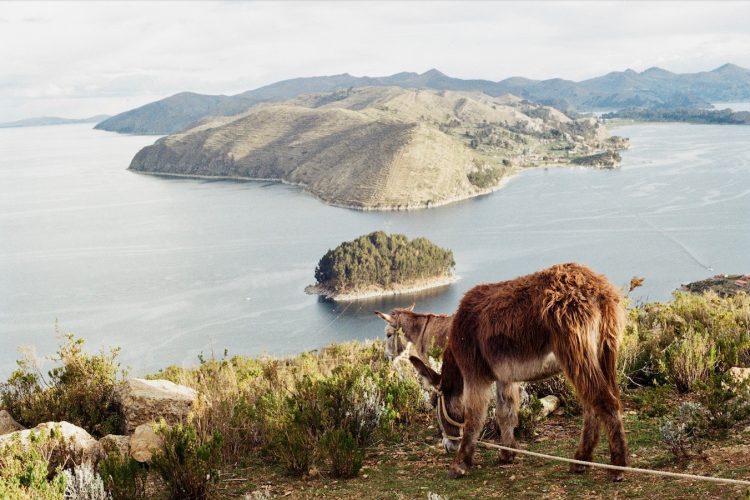

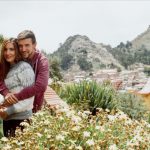

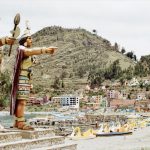

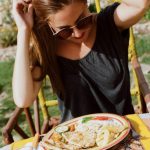
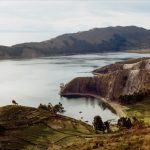
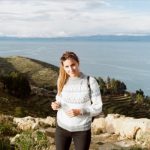

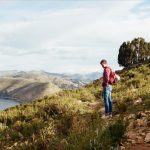

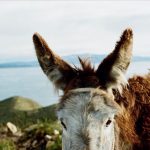
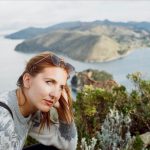
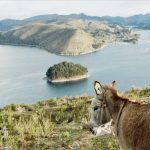
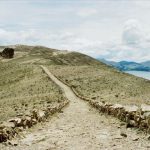
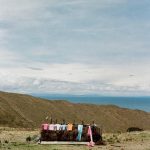
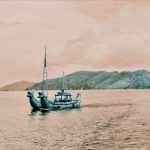
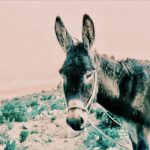
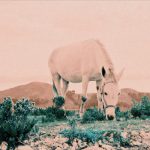


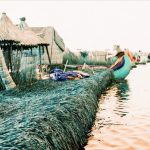
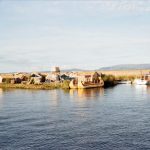
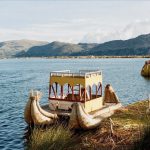
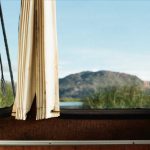


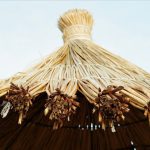

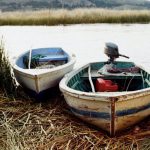
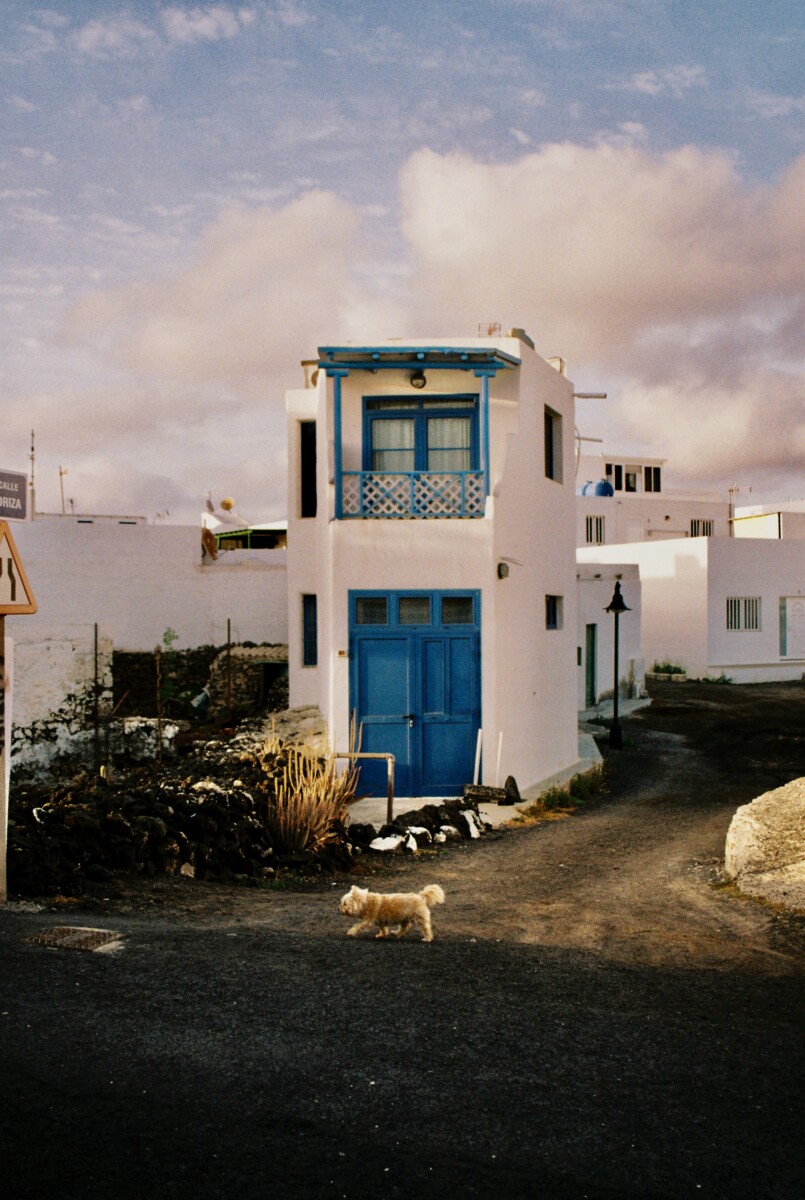


Leave a Reply